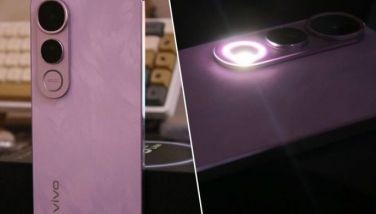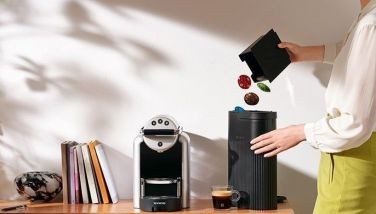As time goes by
The chirping of birds at early morning, the ocean waves crashing to the shore, the cry of a newborn baby, your child pounding on a piano on recital day, and even the sound of unexpected raindrops on a roof on a simmering summer day — a voice so subtle and warm it could caress you to ecstasy — the gentle strumming of an acoustic guitar that evokes playful memories — the melodious plucking of a harp or a soulful piano rendition that can make the weak-hearted cry — the final note that seems to dangle in the air just before an ovation begins — pleasant sounds evoke happy memories.
Sound is life. Can you imagine life without it? Since time immemorial, man has struggled to “preserve†sounds to no avail. Once the air vibrations creating them wither, they’ve vanished for good.
However, what about those tons of records, tapes and compact discs produced by man over the years? When sounds are recorded, what is being stored is not the original but its approximation, which a sound system such as stereo recreates to produce the “copy†of the original air vibration.
It was in 1800 when Thomas Alva Edison was able to recreate sound using a device he called “phonograph.â€Through it, he harnessed the minute but accurate mechanical air pressure waves to record their vibrations. When he shouted at the phonograph’s speaker, for instance, the air vibration caused the stylus (needle) to graze the smooth surface of the moving paraffin-coated paper (wax) thereby causing dents on it. Edison’s voice was played back when the paper was pulled back under the stylus. With this, Edison proved to the world that by forcing “analogous†changes in another medium, we could “store†sound and listen to it anytime we wanted to.
The recording process then was simple in today’s standard: air vibrations forced the needle to graze the even face of a moving wax cylinder, creating little humps in the grooves. High-pitched sound caused the needle to make quick scratches, while the opposite happened in low-pitch sound. The farther the needle traveled, the louder the sound became. The playback process was likewise simple in that it just reversed the recording set-up. The needle was again forced to bounce up and down by the slopes (created by the sound vibrations) in the cylinder or disk. This, in turn, caused a cone-shaped object to create fluctuations in the air with patterns comparable to the original sound. Such wax analogy of the fluctuating air is what we now know as the “analog†recording process.
Analog music simply means an all-tube power amplifier/pre-amps, a turntable and vinyl records (but not necessarily) and a speaker system capable of reproducing live and dynamic music. In previous columns I have explained at length that the compact discs and solid-state amplifiers/pre-amps (made with transistor parts) and compact discs took away the warmth and the encompassing sound of analogs. For most audiophiles like us, music should sound the way it’s meant to be; the way it was originally recorded.
Edison and the other engineers who followed him after have made live music as their reference to how recorded music has to be played back. They believe that live music should have no frequency limitations. Numbers shouldn’t bind it, and neither should it be cut off. Unfortunately, this is what the compact discs (CDs) did to pre-recorded music. In a well-meaning attempt to improve on vinyl records, CDs bound sounds to digital rules.
Sounds have to be digitized in order to be recorded and played back on a CD. Sound engineers have determined that they could get an accurate analog waveform (through a process called Pulse Code Modulation) at 44.1 kHz (44,100 times per second sampling rate). They also decided to cut off frequencies higher than 20 kHz since humans can’t hear sound waves more than that.
Thus, for more than two decades, digital audio systems have used PCM, which sadly exposes the music to a “decimation†filter during recording and an “interpolation†filter during playback. This simply means that these filters can degrade sound quality by smearing and corrupting the sound stage, and thereby compromising the richness of live music.
For me, however, the fault lies in what the sound recording technology of the 1980s brought to the world. I strongly believe that, in order to take advantage of the rapid advancements in digital technology at that time, manufacturers such as Philips rushed the CDs to the market with its technology still imperfect. Yes, the CDs cleaned the music, by ridding the hiss in between tracks. However, they are less dynamic than those of vinyls’ and are without the music artists’ soul. It is like comparing a photograph of the Mona Lisa with its original painting.
Now, vinyl and analog gears are back in the mainstream with teenagers as young as 18 patiently queuing for that prized round black plastic in various vinyl outlets. It took some time before music lovers realized that the sound they’ve grown to hearing in their digital sound system is but, a poor reproduction of an analog sound. Music recording doesn’t have to be that complicated; from a purely engineering standpoint, the fundamental thing applies, as time goes by.
* * *
For comments or questions, please e-mail me at audioglow@yahoo.com. You can also visit www.wiredstate.com for quick answers to your audio concerns.



















